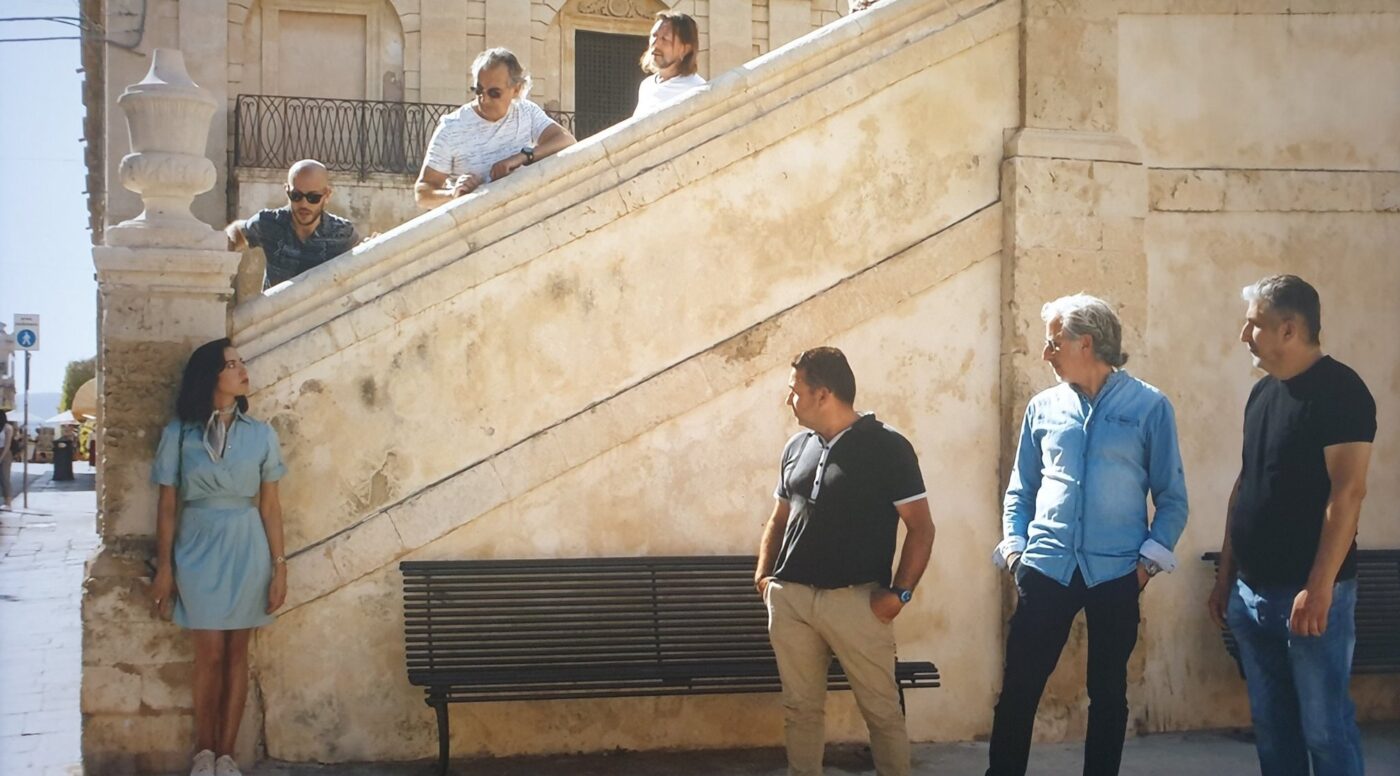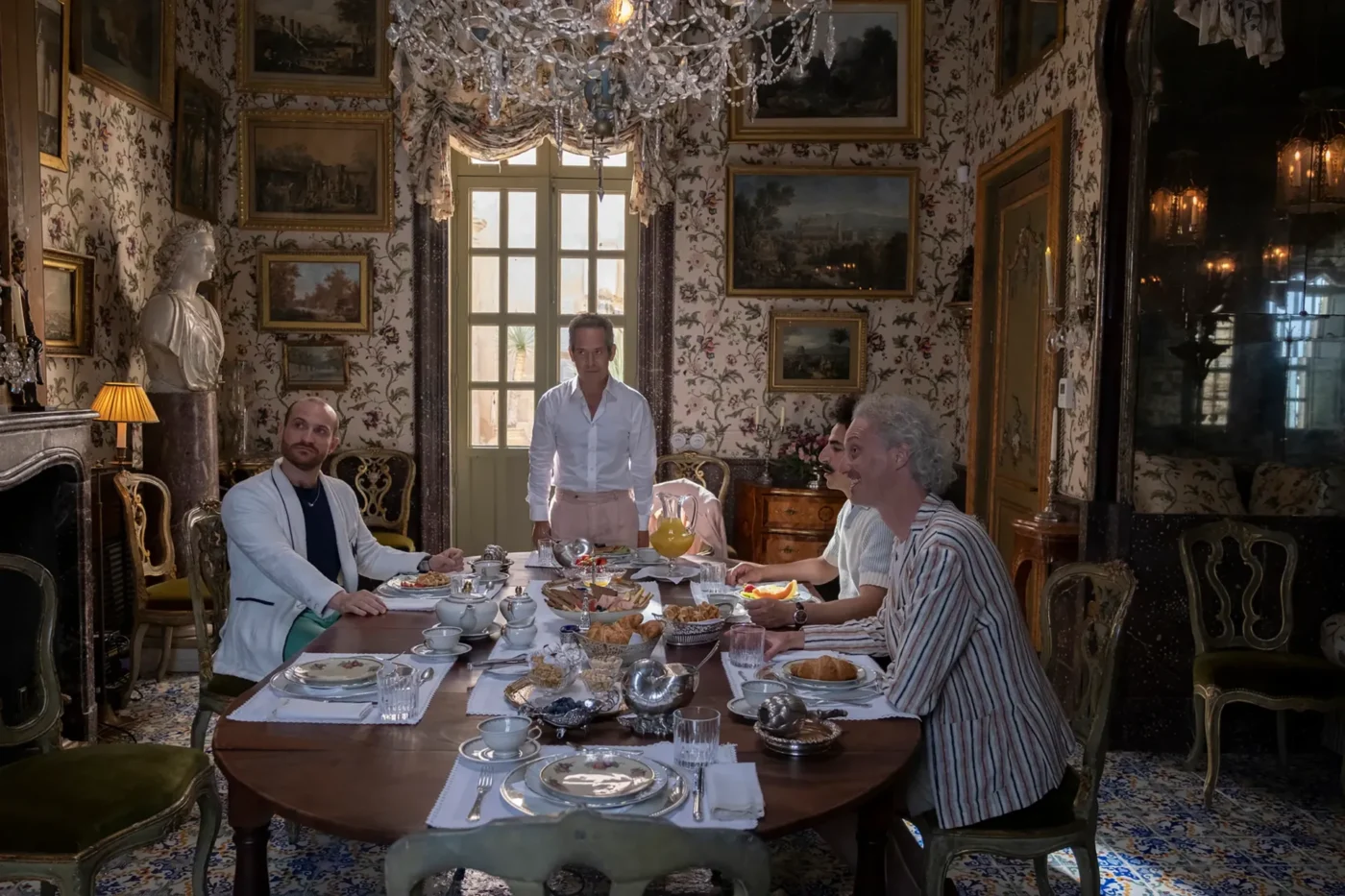TESTE DI MORO
Sicily is known for its colourful, elaborate ceramics, and none more so than the characteristic Teste di Moro. You’ll see them absolutely everywhere: pairs of brightly decorated, glazed vases depicting the heads of a man and a woman. Such is their prevalence in Sicilian life that they merit an entire scene in the first episode, as a bellboy explains their meaning to the guests. According to legend, a traveling Moor and a local Sicilian girl fell madly in love–only for the girl to discover that he had a wife and family back home in the East, to whom he would soon return. Blinded by love and jealousy, the girl waited until the Moor was sleeping and cut off his head so that she could keep it forever, displaying it on her balcony and planting basil in it, watering it with her tears. It’s a cautionary tale for lovers in Sicily–one which, as the characters of The White Lotus soon discover, is all too easily forgotten in a land that inspires such fiery passion. Some of the most intricate and beautiful Teste di Moro are hand-crafted in the city of Caltagirone and in the typical Majolica style, alongside other iconic Sicilian ceramics such as the rather rude-looking pine cone (pigna) that adorns thresholds across the island–as well as most corners of the White Lotus hotel.

VAL DI NOTO
The White Lotus showcased one of the most stunning spots in Sicily when it sent Harper and Daphne on a day trip to Noto. In the province of Syracuse, a two-hour drive from Taormina on the southern tip of Sicily, it’s an exquisite example of Baroque-era architecture with its warm limestone buildings, dramatic scalinata and grand Cathedral. And if it looks familiar, that’s because it has acted as the backdrop for countless films over the years–most notably, Michelangelo Antonioni’s 1960 iconic L’Avventura and Giuseppe Tornatore’s Malena (of Monica Bellucci fame). The White Lotus actually paid tribute to the town’s illustrious cinematic history: the scene in which Harper walks uncomfortably through the piazza among a crowd of creepy, leering men almost exactly mirrors Monica Vitti’s scene in L’Avventura.
Those seeking somewhere a little less overrun with tourists, however, should venture beyond the city itself to discover the rest of the magical towns that make up the UNESCO-certified Val Di Noto area, which encompasses eight towns constructed in the late Sicilian Baroque style, each uniquely fascinating in its own right and one more magnificent than the last. Think Modica for chocolate, Scicli for off-the-beaten-track authenticity and countless Montalbano throwbacks, Caltagirone for ceramics, and Ragusa for high-level dining at one of its numerous Michelin-starred restaurants.
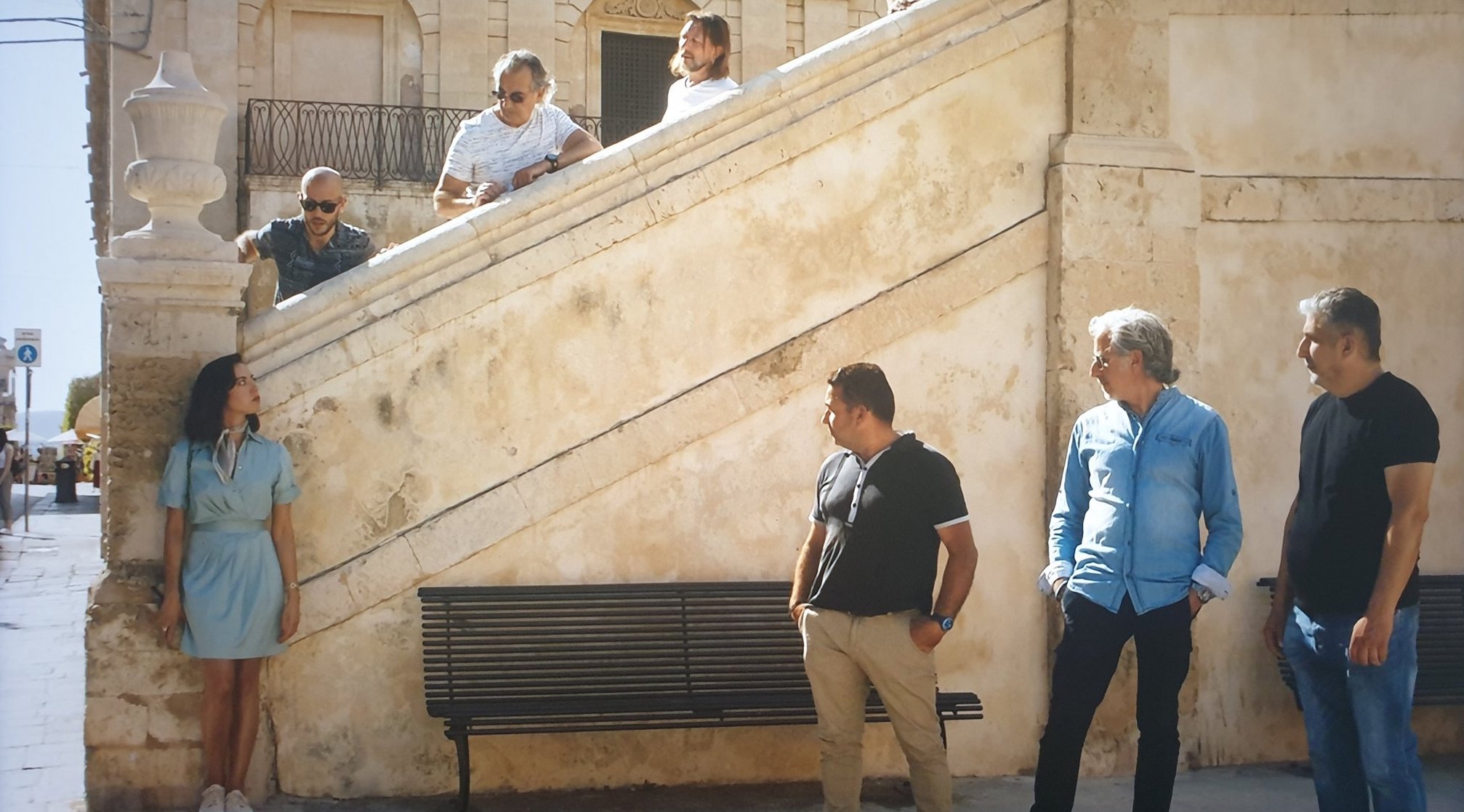
FABRIZIO DE ANDRÉ
For many, The White Lotus served as a much-needed introduction to the man who is arguably Italy’s finest “cantautore”, Fabrizio De André. The unofficial songwriter of the Italian protest movement in the 60s, De André is best described as a poet of music–his typical style combines deceptively simple, cheerful-sounding melodies with lyrics that are instead complex, philosophical and incredibly profound. Though he himself is not Sicilian, De André was the perfect musical choice for a series that’s all about scratching at a seemingly picture-perfect surface to discover the darkness and mess that lies beneath–even more so since he touches on subjects treated in the storyline itself, from love, lust and jealousy to hypocrisy and prostitution. Little wonder he was the most-featured artist of the series: his music plays nine times and in some of the most significant scenes.

Your White Lotus x Fabrizio De André Playlist:
“Bocca di Rosa” (Lucia catches her first glimpse of Cameron)
“Preghiera in Gennaio” (Harper sees Cameron taking off his shorts; Ethan and Daphne disappear onto Isola Bella)
“Amore Che Vieni Amore Che Vai”
“Via Del Campo”
“Spiritual” (Quentin welcomes Tanya to Palermo)
“La Stagione Del Tuo Amore” (Tanya sees *that* shocking uncle-nephew moment)
“Si Chiamava Gesù”

VILLA TASCA
The gloriously opulent neoclassical villa that Harper and Daphne escape to on their spontaneous girls trip is not in fact located in Noto, as the show suggests, but closer to Palermo, on the edge of the historic town of Monreale. Owned by one of the most important aristocratic families on the island, it’s filled with beautiful frescoes, historic furniture and Murano chandeliers, and has played host to the likes of Jacqueline Kennedy, Wagner and Verdi as well as countless royals. But beyond acting as the perfect setting for Daphne to enjoy some edibles, spill her relationship secrets to Harper and “get back at Cam” (little does she know…), Villa Tasca is a fully functioning wedding and events venue–and available to rent in its entirety via Airbnb for around €5,000 a night (drugs and drama not included).
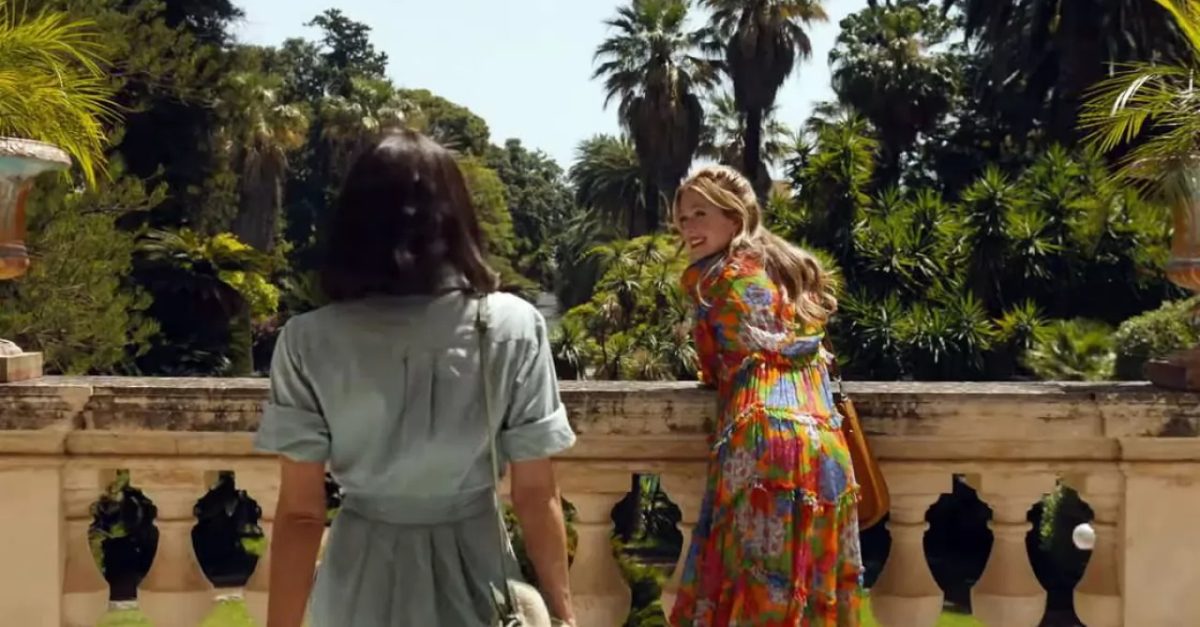
THE INEVITABILITY OF SICILIAN STEREOTYPES
Sicily and the Mafia are inextricably linked in popular culture, and as evidenced by The White Lotus, Hollywood still can’t quite move on from the stereotypes–and nor does it attempt to, either. It’s not long into season two before the Mafia is mentioned, and, predictably, it’s The Godfather, as the Di Grasso family ventures out on a tour of the various locations featured in the 1972 film–the most fitting of backdrops for their similarly outdated arguments about machismo. Then, of course, there’s the beautiful local prostitute Lucia, whose elaborate plan to swindle the Di Grassos plays on (and adds to) the cliché of Sicilians being tricksters and crooks. And finally, the handsome, cocaine-dealing, potentially-murderous “Mafioso” who seduces Tanya and arrives on the yacht with a suspicious-looking black bag. Is he an essential addition to the cast? No. Could The White Lotus resist the allure of including such a clichéd, token Mafia character? Also no. While the Americans in The White Lotus are given fascinating, complex characters that merit endless exploration, the Sicilians, by contrast, are kept inexplicably simple, flat, depressingly one-note. Perhaps it’s what audiences have come to expect, and thus still want to see–but how can Sicily be expected to move forward from its negative associations if the rest of the world won’t let it?

THE BEACHES OF CEFALÙ
Taormina might have its epic panoramas, glamorous events, classical history and the alluring view of active Mount Etna looming overhead, but an abundance of sandy white beaches? Not quite. The main town of Taormina is located on a rocky hilltop, and while there is a cable car that takes visitors to the picturesque Isola Bella down below, the beaches shown in The White Lotus are actually on the other side of Sicily in a town called Cefalù. In fact, if you look closely, you can spot Cefalù’s famous Norman Cathedral in the background of the first and final scenes of the show. Taormina, and nearby Giardini Naxos, beaches have their rustic, rocky charm–but it’s telling that Mike White selected another spot entirely to show the white sand and crystal-clear-water idyll of the Sicilian seaside, and Cefalù’s is one of the best in the whole of Italy.
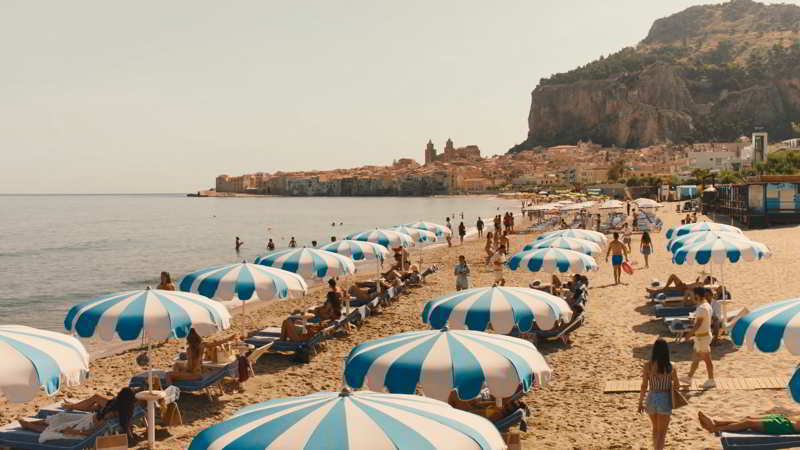
VILLA ELENA
Much like the aforementioned Villa Tasca, the palatial, aristocratic villa that Quentin and “the gays” inhabit near Palermo is in reality located a little while away in… Noto. It’s one of the most outstanding private residences in Sicily, if not the whole of Italy, and has been profiled everywhere from Architectural Digest to House & Garden as well as being the subject of an entire Rizzoli book. A 17th-century monastery built in Noto’s characteristic golden limestone, it was restored to new realms of glory by world-renowned interior designer Jacques Garcia, complete with all the spectacular salons, luxurious marbles, opulent furnishings and priceless antiques shown in the latter few episodes of The White Lotus. The most impressive feat, however, is how Garcia so masterfully blended the many influences of Sicily’s complex history—Arabian, Norman, Renaissance, Baroque—into one glorious, cohesive vision. Sadly, it’s not available to rent (and would likely be in the hundreds of thousands a week, if it were), but the photographic property porn is always free.
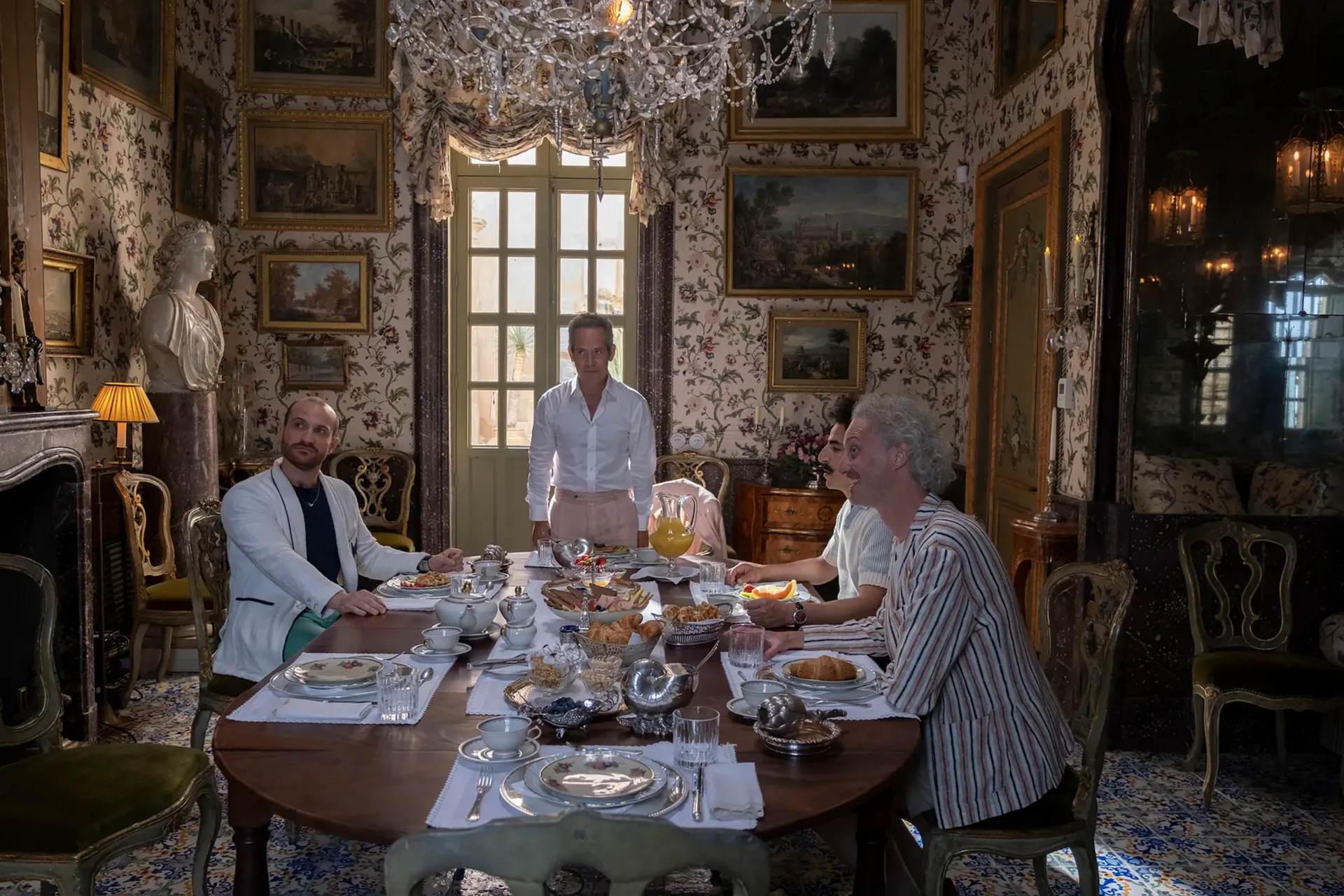
THE SERIES DIDN’T SHOW THE REAL SICILY AT ALL
The White Lotus never pitched itself as a deep-dive into Sicilian history, landscapes and culture, but still, its depiction of the island felt a little… reductive. For one, its locals were portrayed largely as swindlers and crooks, when in reality they are some of the most generous, warm and passionate in the world. Then, there’s the fact that food features almost not at all—an unthinkable, and downright bizarre, decision for a programme set in one of the most famous culinary destinations in the world, and where food is arguably at the centre of (almost) everything.
There are the lavish breakfasts, the endless Spritzes and the odd meal out of course, but what of the arancini, red prawns, caponata, pasta alla Norma and cannoli of our Sicilian gastronomic dreams? Americans in Italy may not have the best reputation for full-scale immersion, and The White Lotus’ guests aren’t exactly the most cultured bunch, but for them to eat in the same hotel restaurant, day in and day out, with little interest in trying anything new–and even dare to complain that they know the menu by heart!–is genuinely inconceivable, if not downright ridiculous. Not to mention they barely leave the resort at all for the duration of their holiday, but for a handful of highly generic day trips… It’s no way to experience Sicily–or anywhere else for that matter. You’ll learn a lot more about the island while enjoying a coffee and granita in the piazza than you will in an entire week within four luxurious hotel walls. But for the characters of The White Lotus, it seems Sicily is little more than a pretty backdrop for their personal dramas and problems to unfold. For us, luckily, it’s always going to be so much more.






